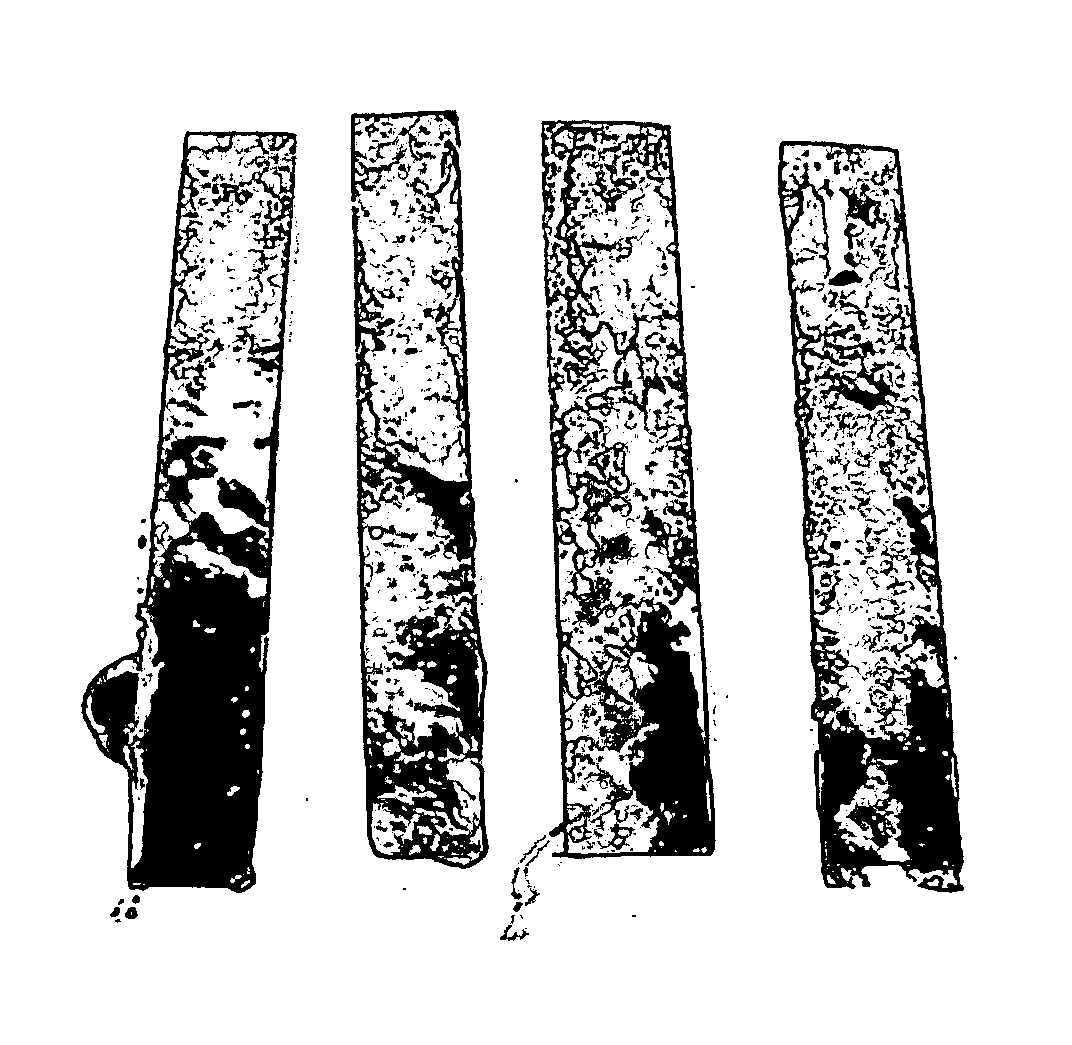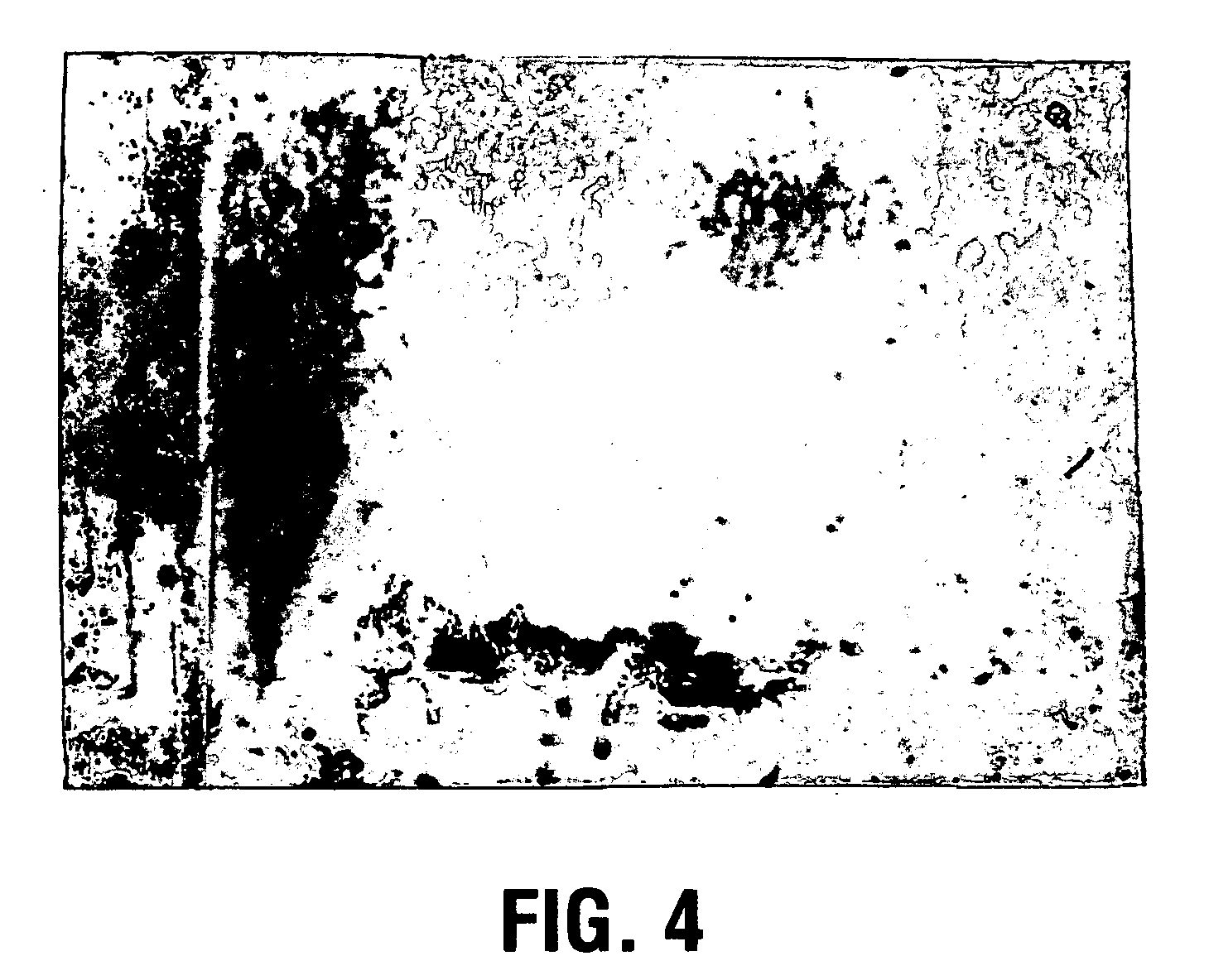Drilling Fluids, Drilling Fluids Additives and Methods Useful for Limiting Tar Sands Accretion on Metal Surfaces
a technology of additives and additives, applied in the direction of earth drilling, drilling composition, drilling/well accessories, etc., can solve the problems of excessive drilling operation costs, affecting drilling operations, and affecting the operation of drilling, so as to reduce the accretion of tar sand
- Summary
- Abstract
- Description
- Claims
- Application Information
AI Technical Summary
Benefits of technology
Problems solved by technology
Method used
Image
Examples
example 1
[0027] A sample of drilling fluid was prepared using 350 mL of water containing 0.5% polyanionic cellulose, and 0.3% of a slurried polysaccharide. A slurry was prepared using this fluid and 75 g of tar sand as described in the test procedure. Four steel coupons as described in the test procedure were placed into an aging cell with the slurry and placed in a roller oven for 96 hours. The coupons were removed and treated as described in the test procedure. Tar sand accretions were evident on the coupons as shown in FIG. 1. The tar sand accretion was found to be 102 g tar sand / m2 steel. This example demonstrates the accretion of tar sand on simulated drill string when the drilling fluid is not treated with an anti-accretion additive.
example 2
[0028] Two samples of drilling fluids were prepared using 350 mL of water containing 0.6% of a liquid suspension of a polysaccharide viscosifier, 1% of a starch-based fluid loss control additive and 0.6% of an amine-based clay stabilizer. A slurry was made with this fluid and 75 g of tar sand as described in the test procedure. Steel sleeves as described in the test procedure were placed into each of two aging cells with the corresponding slurry then placed in a roller oven for 24 and 108 hours. The sleeves were removed and treated as described in the test procedure. Tar sand accretions were evident on both the 24 hour and 108 hour aging tests. The tar sand accretion was calculated and found to be 121 g tar sand / m2 steel for the 24 hour aging and 163.8 g tar sand / m2 for the 108 hour aging. This example demonstrates the accretion of tar sand on simulated hole casing material when the drilling fluid is not treated with anti-accretion additives.
example 3
[0029] Consultants in the field report the usage of an aqueous starch and xanthan based drilling fluid treated with a citrus oil based cleaner to prevent accretion of heavy oil or bitumen on steel surfaces. To test the efficacy of this type of system, a sample of drilling fluid was prepared using 350 mL of water containing 0.2% xanthan gum, 0.8% of a starch based fluid loss control additive and 10.3% of a d'limonene based cleaning agent. The cleaning agent consisted of equal parts of d'limonene, a 9 mole ethoxylate of nonyl phenol and ethylene glycol monobutyl ether. A slurry was prepared using 100 g of tar sand as described in the test procedure. A steel sleeve, as described, was placed into the aging cell with the slurry and then placed in a roller oven for 60 hours. The sleeve was removed and treated as described in the test procedure. Tar sand accretion was evident over the entire sleeve. FIG. 2 is a picture of the sleeve laid open. The tar sand accretion was calculated and foun...
PUM
 Login to View More
Login to View More Abstract
Description
Claims
Application Information
 Login to View More
Login to View More - R&D
- Intellectual Property
- Life Sciences
- Materials
- Tech Scout
- Unparalleled Data Quality
- Higher Quality Content
- 60% Fewer Hallucinations
Browse by: Latest US Patents, China's latest patents, Technical Efficacy Thesaurus, Application Domain, Technology Topic, Popular Technical Reports.
© 2025 PatSnap. All rights reserved.Legal|Privacy policy|Modern Slavery Act Transparency Statement|Sitemap|About US| Contact US: help@patsnap.com



